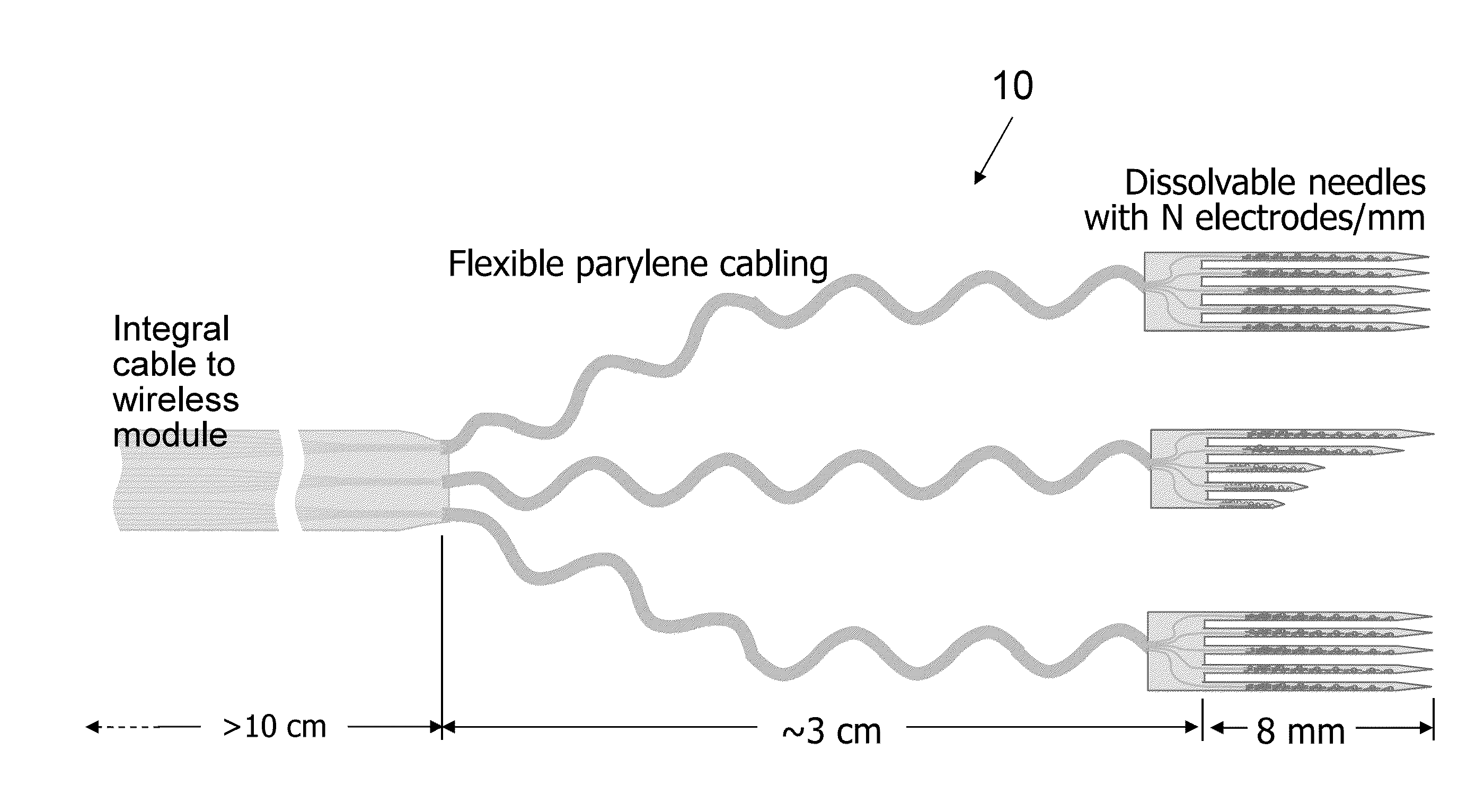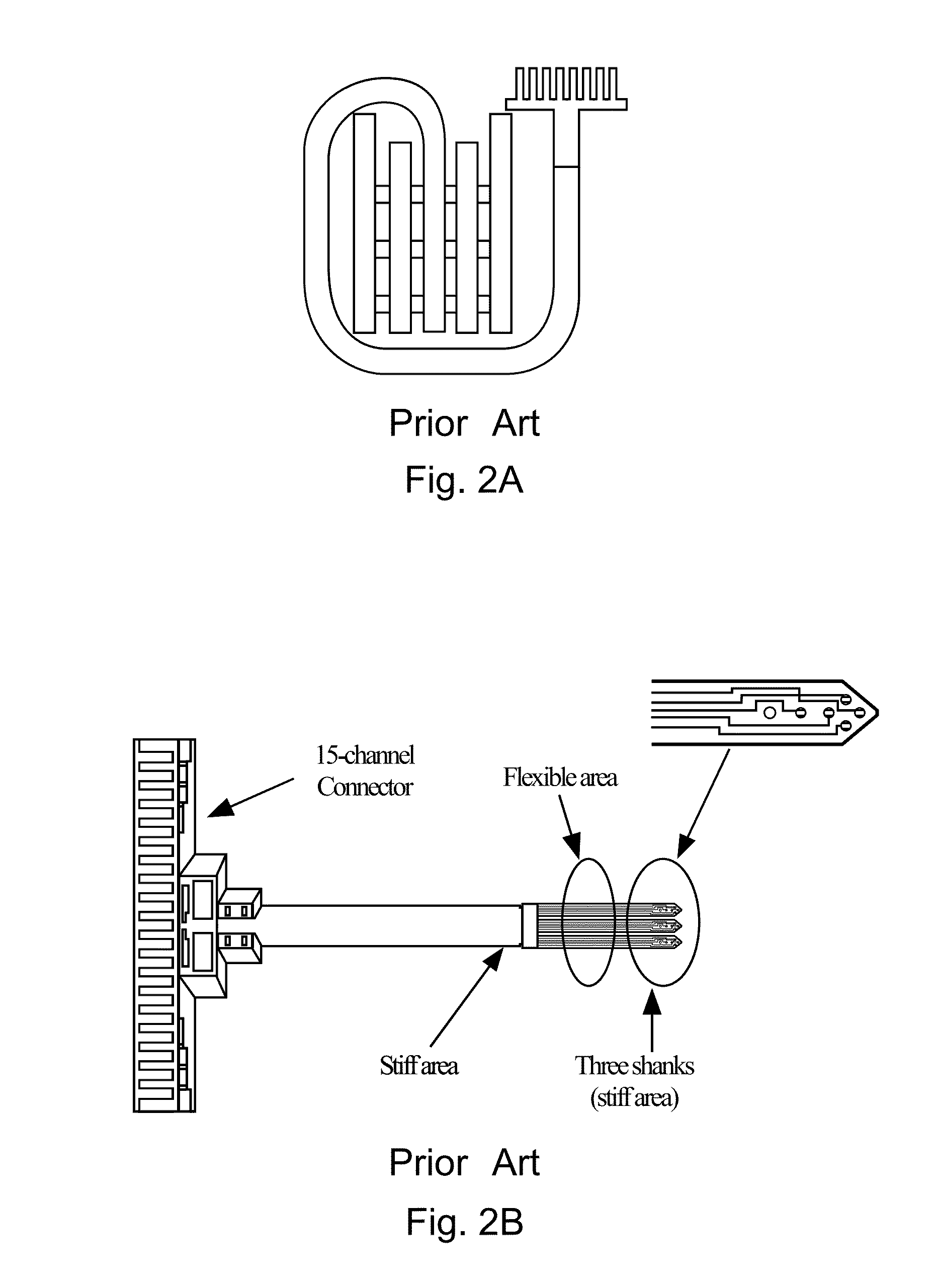Fabrication, methods, apparatuses, and systems for ultra-compliant probes for neural and other tissues
a technology of ultra-compliant and neural tissue, applied in the field of flexible electrodes and electrode arrays, can solve the problems of failure of neural probes, inability of current interfaces to reliably obtain accurate information from neurons, and inability to reliably use measured neural signals to control prostheses with high speed and resolution, so as to reduce glial scar formation, enhance compliance, and improve compliance.
- Summary
- Abstract
- Description
- Claims
- Application Information
AI Technical Summary
Benefits of technology
Problems solved by technology
Method used
Image
Examples
Embodiment Construction
[0039]This present invention describes methods, systems and apparatuses of ultra-miniature, ultra-compliant probe arrays. Although the present invention finds applications in many human and animal tissue systems, as a specific focus and example, the application of ultra-compliant probes and probe arrays to intracortical neural probing is described here. The probe array allows design flexibility to match the stiffness of the tissue it is being applied to, such as the brain tissue, in all three axes (x, y and z), with interconnect cross section smaller than cell dimensions (<10μm). This stiffness matching requires specific geometric and fabrication approaches, commonly leading to ultra-thin wires. This invention also allows the sizing of the electrodes for specific cell dimensions, e.g., to reduce glial scar formation. Further enhancement in compliance is obtained by incorporating different geometric features to the electrode, such as meandering the electrode wires. The small thicknes...
PUM
 Login to View More
Login to View More Abstract
Description
Claims
Application Information
 Login to View More
Login to View More - R&D
- Intellectual Property
- Life Sciences
- Materials
- Tech Scout
- Unparalleled Data Quality
- Higher Quality Content
- 60% Fewer Hallucinations
Browse by: Latest US Patents, China's latest patents, Technical Efficacy Thesaurus, Application Domain, Technology Topic, Popular Technical Reports.
© 2025 PatSnap. All rights reserved.Legal|Privacy policy|Modern Slavery Act Transparency Statement|Sitemap|About US| Contact US: help@patsnap.com



